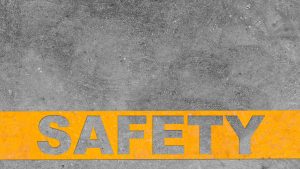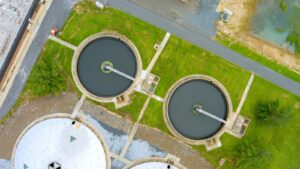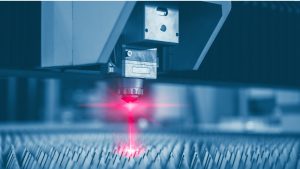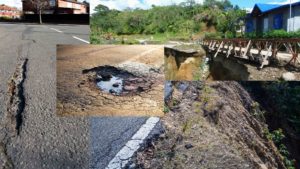Building a skyscraper or a luxury office complex is glamorous, but what about keeping it standing tall for years? Preventive building maintenance is the real hero of construction. Why do we say that? The answer is obvious! It quietly ensures that structures do not just look good on the surface but also stay strong and functional over time. In a world where unexpected repairs can cost millions and put safety at risk, regular maintenance checks and early interventions are the only way to stay away from chaos.
This article delves into why preventive building maintenance should be a top priority in the construction industry.
This article delves into why preventive building maintenance should be a top priority in the construction industry.
What is Preventive Maintenance in Building Construction?
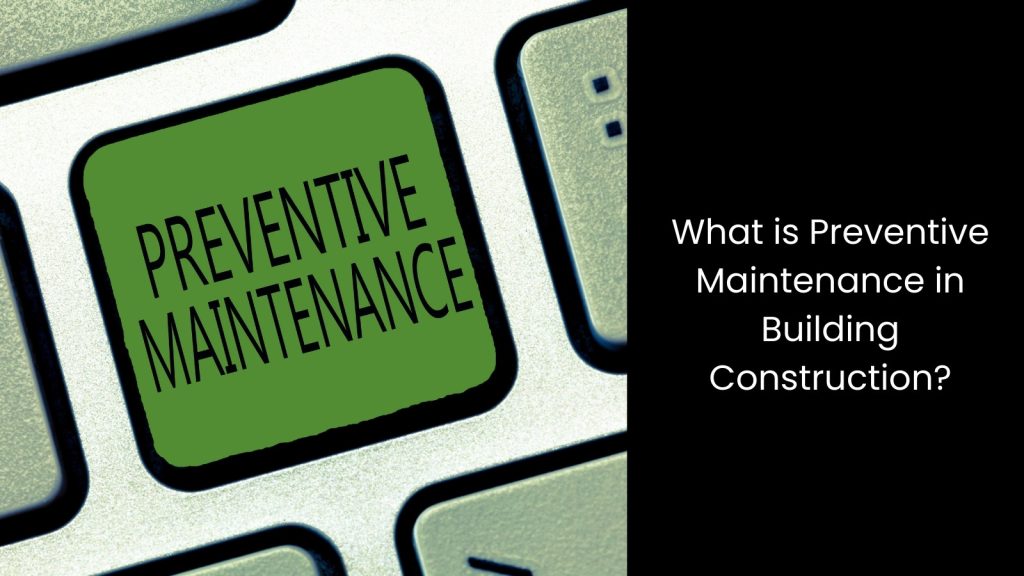
- This talks about the process of regularly checking, repairing, and servicing different parts of a structure to stop small problems from turning into big, expensive issues.
- This type of maintenance focuses on planned inspections, routine servicing, and early repairs before something breaks down. When this is in place, workers follow a schedule to inspect roofs, plumbing, electrical systems, HVAC units, and other essential parts of the building. They clean, lubricate, tighten, and replace worn-out materials before they cause major trouble.
- However, when this concept incorporates advanced monitoring tools, like sensors and automated alerts, it is much faster and easier to track building conditions and signal when maintenance is needed. Maintenance teams also document inspections and repairs to ensure nothing gets overlooked. This method keeps everything running smoothly because it fixes problems at the right time instead of waiting for something to fail.
- This is why construction companies, facility managers, and property owners rely on preventive building maintenance to maintain structural strength, ensure safe operations, and avoid unnecessary downtime.
Why is Preventive Building Maintenance Important for Construction?
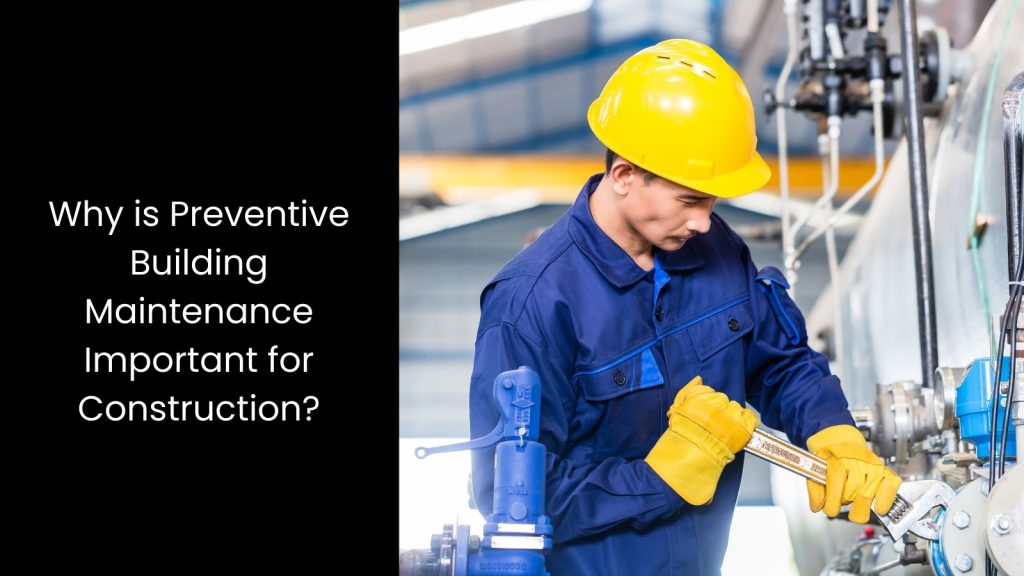
Preserving Structural Integrity
This is beneficial when preventive building maintenance keeps a structure strong by protecting its foundation, walls, and roof from damage. Regular inspections help spot cracks, weak spots, and shifting before they turn into serious structural failures.
You know that small foundation cracks allow water to seep in, which weakens the base over time. Sealing gaps, reinforcing support beams, and fixing drainage systems prevent water from causing long-term damage. Walls face constant exposure to weather, temperature changes, and moisture.
This is when maintenance crews repair minor cracks, repaint surfaces, and replace damaged materials to stop deterioration. Ignoring these issues leads to weakening, which makes the entire structure unsafe.
If you notice, you will see that roofs take the most impact from rain, wind, and sun. Loose shingles, clogged gutters, and water pooling create leaks that weaken internal structures. Regular roof inspections and cleaning remove debris, improve drainage, and keep everything intact.
So, this is the main reason that construction teams rely on preventive building maintenance to avoid sudden collapses, costly repairs, and unsafe conditions. Strengthening weak points before they fail ensures the entire building remains stable for years.
You know that small foundation cracks allow water to seep in, which weakens the base over time. Sealing gaps, reinforcing support beams, and fixing drainage systems prevent water from causing long-term damage. Walls face constant exposure to weather, temperature changes, and moisture.
This is when maintenance crews repair minor cracks, repaint surfaces, and replace damaged materials to stop deterioration. Ignoring these issues leads to weakening, which makes the entire structure unsafe.
If you notice, you will see that roofs take the most impact from rain, wind, and sun. Loose shingles, clogged gutters, and water pooling create leaks that weaken internal structures. Regular roof inspections and cleaning remove debris, improve drainage, and keep everything intact.
So, this is the main reason that construction teams rely on preventive building maintenance to avoid sudden collapses, costly repairs, and unsafe conditions. Strengthening weak points before they fail ensures the entire building remains stable for years.
Extending Building Lifespan
Since the stakeholders have invested a lot in these buildings, keeping them in top shape makes sense. This is where preventive building maintenance plays a huge role in making that happen.
Let us elaborate on this. It is unnecessary to say that ignoring small problems leads to faster deterioration. But regular inspections, repairs, and upgrades slow down wear and tear. Foundations stay strong when workers seal cracks and improve drainage, stopping water from weakening the structure.
Plus, walls last longer when crews fix minor damages, repaint surfaces, and replace deteriorating materials before they become a bigger problem. Roofs hold up better against the weather when maintenance teams clear debris, repair leaks, and reinforce weak areas. Electrical and plumbing systems keep working efficiently when professionals inspect wiring, test circuits, and fix pipe leaks before they cause major breakdowns.
This way, long-term durability depends on addressing minor issues before they spiral into costly damage. As you can see, preventive building maintenance extends the lifespan of any structure by keeping each part in proper working condition. Buildings that receive consistent care avoid sudden failures, expensive renovations, and safety risks. A well-maintained structure stays functional for decades, serving its purpose without unnecessary disruptions.
Let us elaborate on this. It is unnecessary to say that ignoring small problems leads to faster deterioration. But regular inspections, repairs, and upgrades slow down wear and tear. Foundations stay strong when workers seal cracks and improve drainage, stopping water from weakening the structure.
Plus, walls last longer when crews fix minor damages, repaint surfaces, and replace deteriorating materials before they become a bigger problem. Roofs hold up better against the weather when maintenance teams clear debris, repair leaks, and reinforce weak areas. Electrical and plumbing systems keep working efficiently when professionals inspect wiring, test circuits, and fix pipe leaks before they cause major breakdowns.
This way, long-term durability depends on addressing minor issues before they spiral into costly damage. As you can see, preventive building maintenance extends the lifespan of any structure by keeping each part in proper working condition. Buildings that receive consistent care avoid sudden failures, expensive renovations, and safety risks. A well-maintained structure stays functional for decades, serving its purpose without unnecessary disruptions.
Reducing Repair Costs
It is important to keep repair costs under control, and preventive building maintenance helps construction companies and property owners avoid expensive fixes. Let’s see how this functions.
Small issues like tiny cracks in walls, minor leaks in pipes, or loose roofing materials seem harmless at first, but they grow into bigger problems when left unchecked. Water damage from an unnoticed leak weakens structural components, leading to costly replacements. A faulty electrical connection that goes ignored can turn into a fire hazard, causing massive repair expenses.
Routine inspections and early repairs stop these minor damages from getting worse and save a lot of money in the long run. Fixing a small plumbing issue costs far less than dealing with burst pipes and water damage. Replacing a few worn-out roof shingles prevents the need for an entire roof overhaul.
The best part of preventive building maintenance is that it allows construction teams to plan repairs on their own schedule instead of scrambling to fix unexpected breakdowns. Emergency repairs cost more because they require immediate attention, rush fees, and sometimes temporary shutdowns. Regular maintenance spreads out expenses, makes budgeting easier, and avoids sudden financial strain.
Keeping a building in good shape through scheduled check-ups, early problem-solving, and timely upgrades ensures that repair costs stay manageable. Fixing things when they are small prevents expensive disasters and keeps construction projects financially sustainable. Do you agree?
Small issues like tiny cracks in walls, minor leaks in pipes, or loose roofing materials seem harmless at first, but they grow into bigger problems when left unchecked. Water damage from an unnoticed leak weakens structural components, leading to costly replacements. A faulty electrical connection that goes ignored can turn into a fire hazard, causing massive repair expenses.
Routine inspections and early repairs stop these minor damages from getting worse and save a lot of money in the long run. Fixing a small plumbing issue costs far less than dealing with burst pipes and water damage. Replacing a few worn-out roof shingles prevents the need for an entire roof overhaul.
The best part of preventive building maintenance is that it allows construction teams to plan repairs on their own schedule instead of scrambling to fix unexpected breakdowns. Emergency repairs cost more because they require immediate attention, rush fees, and sometimes temporary shutdowns. Regular maintenance spreads out expenses, makes budgeting easier, and avoids sudden financial strain.
Keeping a building in good shape through scheduled check-ups, early problem-solving, and timely upgrades ensures that repair costs stay manageable. Fixing things when they are small prevents expensive disasters and keeps construction projects financially sustainable. Do you agree?
Ensuring Safety
A strong building simply means safety. Isn’t it? This is why you should rely on preventive building maintenance, as it protects people from accidents.
For example, weak structures, faulty wiring, slippery floors, and damaged staircases create serious hazards that put lives at risk. On the other hand, routine inspections help spot loose handrails, unstable walls, and worn-out electrical components before they cause injuries. Fixing these dangers early keeps everyone safe, whether they are workers, residents, or visitors.
Another thing is that fire hazards decrease when maintenance crews check smoke detectors, inspect wiring, and clear out blocked exits. Slips and falls become less likely when teams repair cracked walkways and ensure proper lighting. Preventing these risks not only protects people but also avoids lawsuits and insurance claims that come with unsafe conditions.
Preventive building maintenance, as an outstanding concept, ensures that construction sites, office spaces, and residential buildings stay secure by fixing hazards before they turn into real threats.
For example, weak structures, faulty wiring, slippery floors, and damaged staircases create serious hazards that put lives at risk. On the other hand, routine inspections help spot loose handrails, unstable walls, and worn-out electrical components before they cause injuries. Fixing these dangers early keeps everyone safe, whether they are workers, residents, or visitors.
Another thing is that fire hazards decrease when maintenance crews check smoke detectors, inspect wiring, and clear out blocked exits. Slips and falls become less likely when teams repair cracked walkways and ensure proper lighting. Preventing these risks not only protects people but also avoids lawsuits and insurance claims that come with unsafe conditions.
Preventive building maintenance, as an outstanding concept, ensures that construction sites, office spaces, and residential buildings stay secure by fixing hazards before they turn into real threats.
Preventing Water Damage
This is another headache for the building maintenance, and this is where you need the latter to step in before water damage turns small problems into expensive nightmares.
Leaky pipes, clogged drains, and damaged roofs allow moisture to creep into walls and ceilings, and this creates the perfect conditions for mould growth and structural weakening. Water seeps into cracks, expanding them over time and making buildings less stable.
But when you conduct regular inspections, they catch early signs of leaks, ensuring that plumbing systems stay in good shape and drainage works properly. Roofing teams replace missing shingles and seal weak spots before rainwater finds its way inside. Mould not only destroys surfaces but also affects air quality, leading to health concerns.
This way, preventive building maintenance helps construction teams avoid costly repairs by keeping water out of places where it does not belong.
Leaky pipes, clogged drains, and damaged roofs allow moisture to creep into walls and ceilings, and this creates the perfect conditions for mould growth and structural weakening. Water seeps into cracks, expanding them over time and making buildings less stable.
But when you conduct regular inspections, they catch early signs of leaks, ensuring that plumbing systems stay in good shape and drainage works properly. Roofing teams replace missing shingles and seal weak spots before rainwater finds its way inside. Mould not only destroys surfaces but also affects air quality, leading to health concerns.
This way, preventive building maintenance helps construction teams avoid costly repairs by keeping water out of places where it does not belong.
Employing AI Power to Extend the Lifespan of Buildings
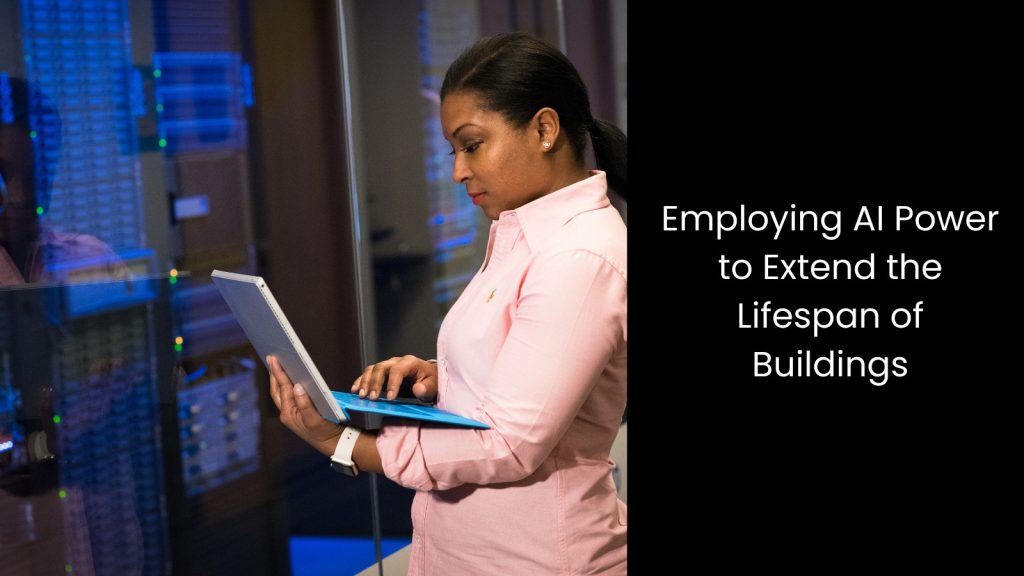
Embracing AI-powered preventive building maintenance is not just about efficiency. It is about ensuring that structures stand strong for generations. Smart systems catch issues before they escalate and keep buildings safe, cost-effective, and resilient. As technology evolves, integrating AI into maintenance becomes the smartest way to extend a building’s lifespan while reducing long-term risks and expenses. However, you need to collaborate with an industry expert for this integration if you expect the best possible outcome.

